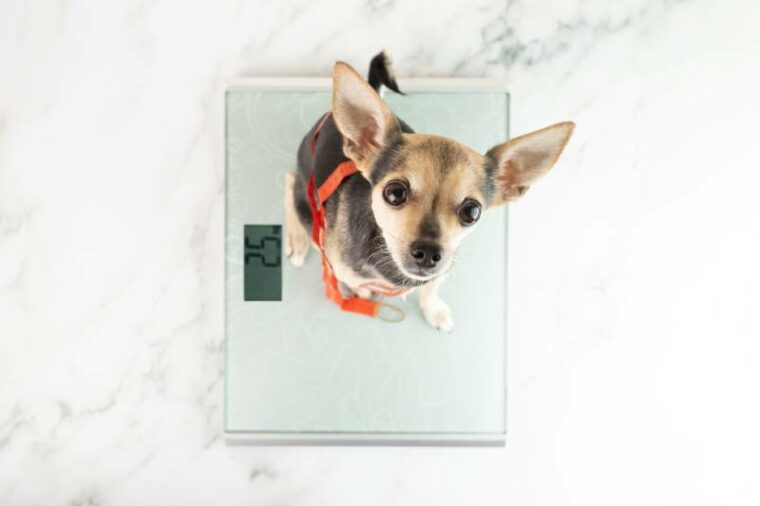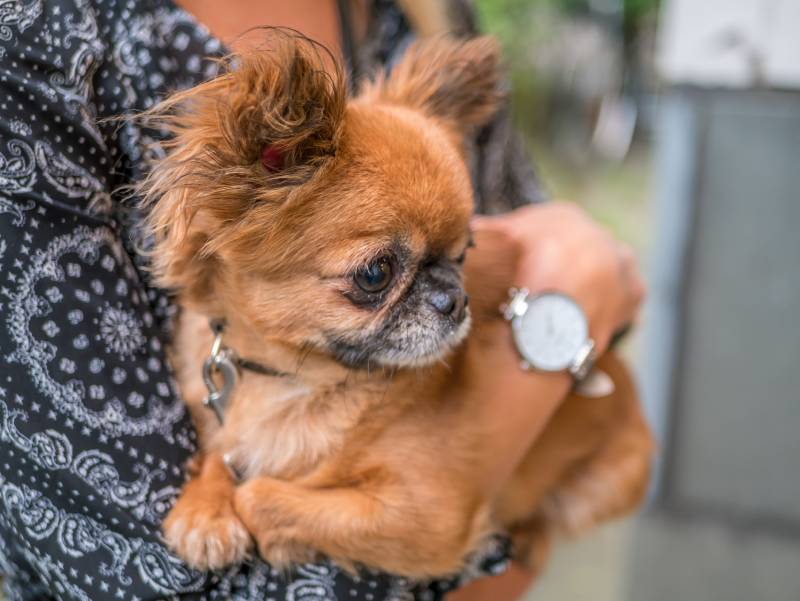
Click to Skip Ahead
Unfortunately, canine obesity is a prevalent problem that can be avoided. Therefore, as dog owners, we must monitor our dog’s weight and overall health. Getting your dog to hop on the scale to be weighed is one of the best ways to determine whether they are overweight or underweight. While some dogs may not object to the process, especially if rewarded with a treat, others may not enjoy it or struggle to sit still. If you need to monitor your dog’s weight at home, we have a step-by-step guide to help you.
How Often Should I Weigh My Dog?
Most veterinarians suggest that dogs should be weighed at least once a year, but weighing them every 6 months is ideal for dogs with no health concerns. Sometimes, your dog may need to be weighed more frequently, depending on their health conditions and age.
Frequent weight checks may be necessary for chronic illnesses, especially those that affect appetite or water intake, such as diabetes or cancer. Puppies must be weighed more often, at least every 3–4 weeks, for the first 6 months of their life.

Tips for Weighing Your Dog
Although weighing your dog at the vet’s office is more accurate, you can keep track of their development by weighing them at home.
How to Weigh a Small Dog or Puppy at Home
Here is how you can weigh a small dog at home step by step:
- If you can easily pick your dog up, you can use a bathroom scale. Pick your dog up and hold them firmly so they don’t wiggle or attempt to jump.
- Once you have your dog in your arms and they’re calm, step onto the scale.
- Look down at the final number on the scale screen and write it down. This number is the weight of you and your dog.
- Now, let your dog go and stand on the scale on your own.
- Record the number on the scale.
- Take the first number you recorded, which included your dog, and subtract your weight.
- The answer will be your dog’s weight, which you can now compare to the breed’s ideal weight. This can vary though so ask your vet to determine the ideal weight for your individual dog.

How to Weigh a Large Dog at Home
What If My Dog Doesn’t Like Being Weighed?
Many dogs don’t enjoy being on the scale or even being held, which can make the process difficult. While it’s best to begin weighing your dog often while they’re still a puppy and positively reinforce the process with praise and treats, your dog may be older and not used to the scale or has possibly had a bad experience with one.
Clicker Training
Regardless of your dog’s age, clicker training can help your dog become used to being weighed without stress. Click and give your dog a treat each time they sniff the scale. Do the same every time your dog places a foot on the scale, and work your way toward getting your dog to sit on it.

Veterinarian’s Scale
The best and most effective solution is to take your dog to the veterinarian’s office since they have large scales that are big enough for all breeds. Your vet can also provide you with all the information you need to maintain your dog’s ideal weight.
Tips for Maintaining a Healthy Weight for Your Dog
Your dog’s weight can significantly affect their health, so it’s important to ensure you are taking the necessary steps to maintain your dog’s ideal weight.
Conclusion
While it’s best to have your dog weighed at the veterinarian’s room from a young age, it can’t always be done, and in some cases, you will need to weigh your dog at home. Fortunately, it is possible, but it is easier for smaller dogs or puppies since you can hold them in your arms and climb onto the scale.
Bigger dogs need a wide platform placed on the scale and sometimes a little coaxing. Getting your dog comfortable with stepping onto the scale can make it much easier to weigh them.
Featured Image Credit: Tikhonova Yana, Shutterstock








